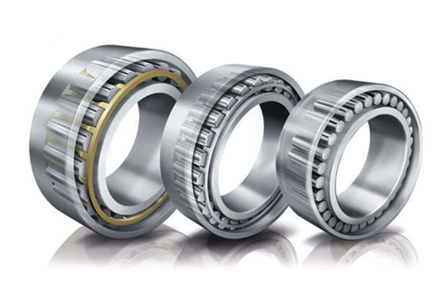There are three very critical aspects in the application of grease:
Clean up, raise, run-in. Excellent bearing cleaning, lubricant filling or running-in has a particularly important hazard to increase the service life of the bearing.
With the use of life and reliability in the bearing operation, cleaning is becoming more and more important, and it is more and more critical to remove all existing lubricants, greases and rust inhibitors in the process of regreasing. A clean touch surface can improve the adhesion of the lubricating slick to it. Removal of this vegetable oil can reasonably prevent the incompatibility between them and the lubricant that must be added. Before applying lubricating products based on silicon or fluorine, it is recommended that the residue be cleaned up.
The lubricant layer remaining on the surface of the existing bearing will become a chemical substance that separates it, preventing the new grease from lubricating the rolling elements and cage of the bearing. In order to ensure the adhesion of the grease emulsifier to the bearing surface during high-speed operation, a clean dry lubricating surface is very necessary for relubrication.
Grease filling The appropriate amount of grease filling is based on the type of bearing design, operating speed, reasonable indoor space inside and near the bearing, and the sealing standard of the bearing plus the actual working conditions of the natural environment. The overall goal of grease filling is to produce a stable and consistent lubricating oil slick for all working surfaces of the bearing. The overall goal is to be thin and thick to avoid the friction between the metal material and the metal material, and to show all-liquid oil slick lubrication.
When grease-lubricated bearings are used, the amount of grease to be filled becomes more and more critical. The adjustment rate factor in the bearing application and the rate ratio in the work are the key elements for determining the demand for grease.
During the running-in period, when the lubricating oil slick is generated, unnecessary grease will be discharged from the touch surface. The complete discharge of this unnecessary grease is very critical, in order to prevent the internal friction of the grease from increasing and causing the bearing to heat up too much. When the grease filling is applied under the condition of a closed bearing, the appropriate amount of grease filling becomes more and more important.
According to the work showing an inner cavity larger than the reasonable indoor space inside the bearing, there will be sufficient indoor space to store unnecessary grease. The inner cavity can also be used as a grease reservoir, during the operation period, according to the diffusion phenomenon, the lubrication point is continuously shown to fill and lubricate. The internal cavity volume must be effective to accommodate unnecessary grease and to ensure that all normal diffusion phenomena occur. A moderate internal cavity design is conducive to the additional sealing effect of the bearing grease, and reasonably increases the life of the grease and the bearing.


